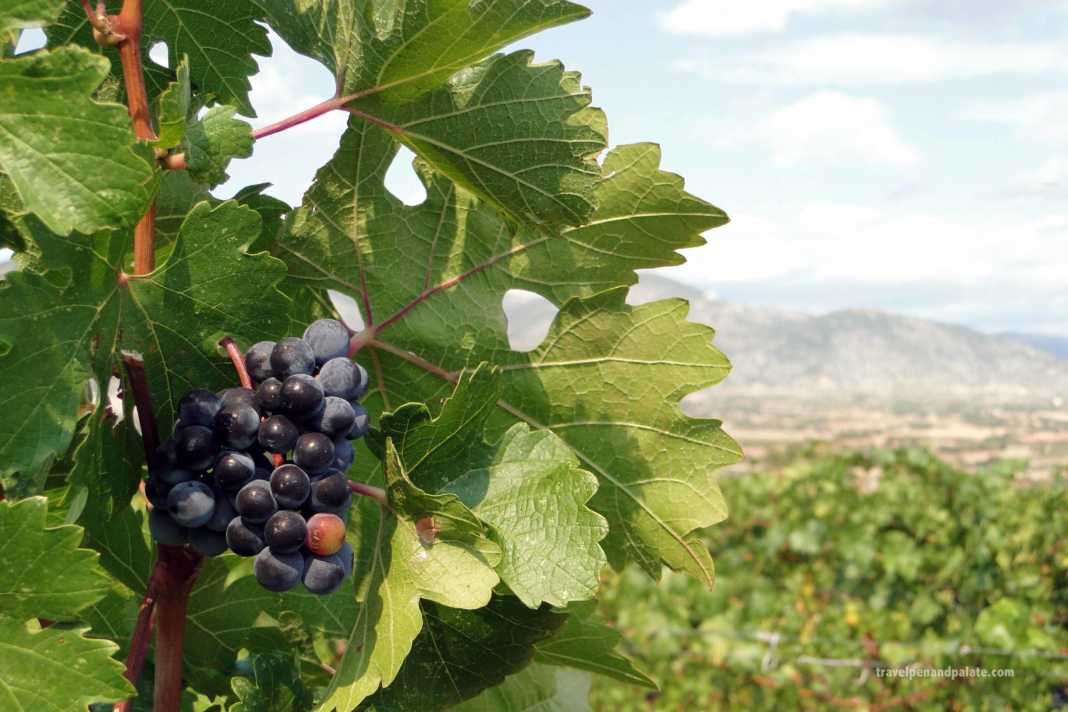F – εὖ is a descriptor for all that’s good and creative in a person’s life – one that Dionysus, god of wine, sitting on his magic mountain would bestow.
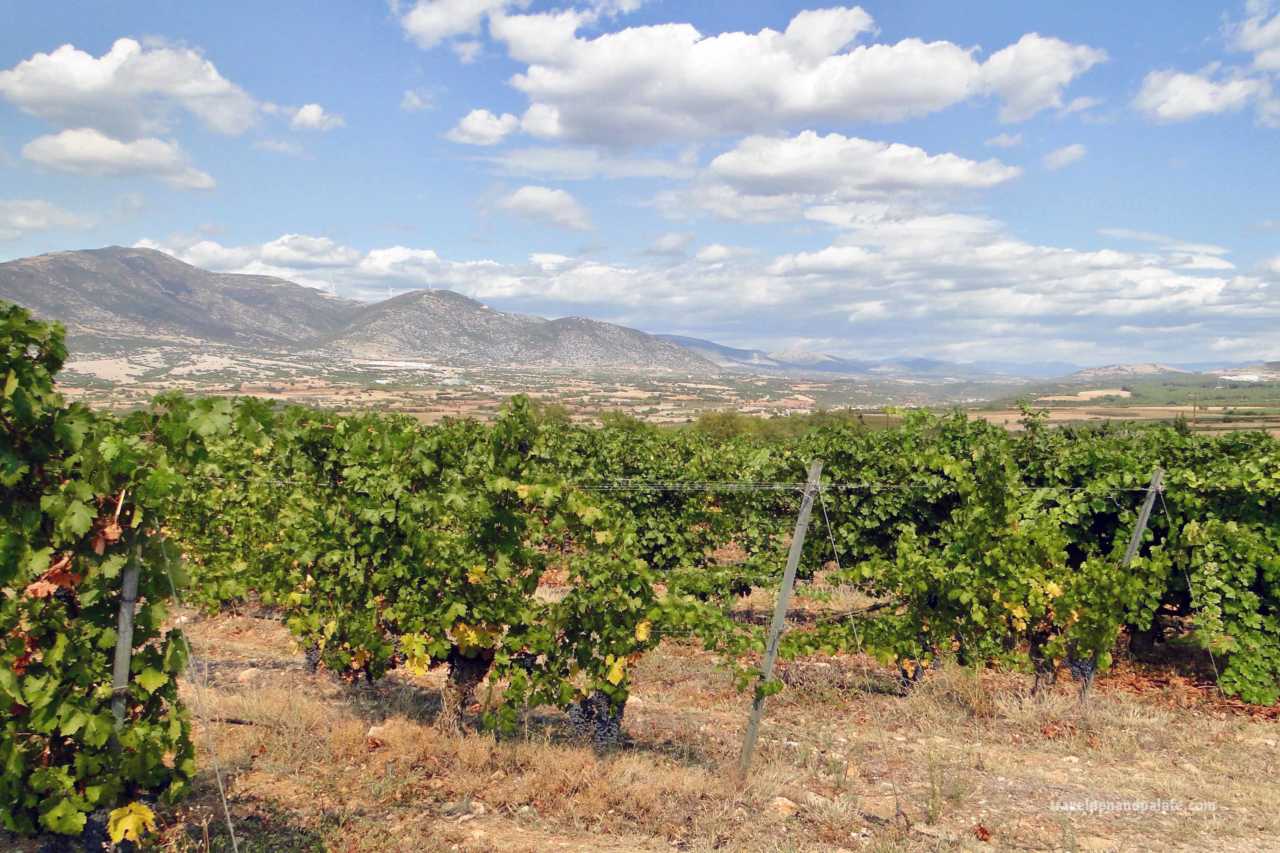
It’s easy to understand why fun loving Dionysius was a favorite deity among humans. Vineyards have existed in northern Greece since antiquity. The earliest archeological records for wine production are at least 7,000 years old. Wine was essential to the Greek psyche and in everyday life Macedonia and Thrace was its motherland.
The Kingdom of Thasos (1st millennium BC) within ancient Thrace established the first quality control system for grapes, wine and olive oil. It’s ironic that for seven millenniums, Thrace has been the mother terroir of wine grapes. Yet wine production virtually ended in the 15th century after the conquest of Greece by the Ottoman Empire. It was replaced, ironically, by phenomenal profits earned from the New World’s “King Tobacco.” The devastation of 20th century wars finished the process.
Restoration during the past half century has reestablished Macedonia and Eastern Macedonia/Thrace once again as premiere European wine regions.
Chateau Nico Lazaridi
Inspired by the allegorical 1924 Thomas Mann novel The Magic Mountain, Frederico Lazaridis takes seriously the primal interplay of mythic forces and human reality.
More to the point, Chateau Nico Lazaridi sits opposite Eastern Macedonia/Thrace’s own magic mountain – Mount Pangeon. Its magic was both mythic – a favorite party mountain for Dionysus – and tangible. Its vast gold deposits funded the empires of Philip II and Alexander the Great, paid for the construction of the nearby legendary city of Philippi and, sitting on the Via Egnatia, was at the crossroads between Eastern and Western cultures for centuries.
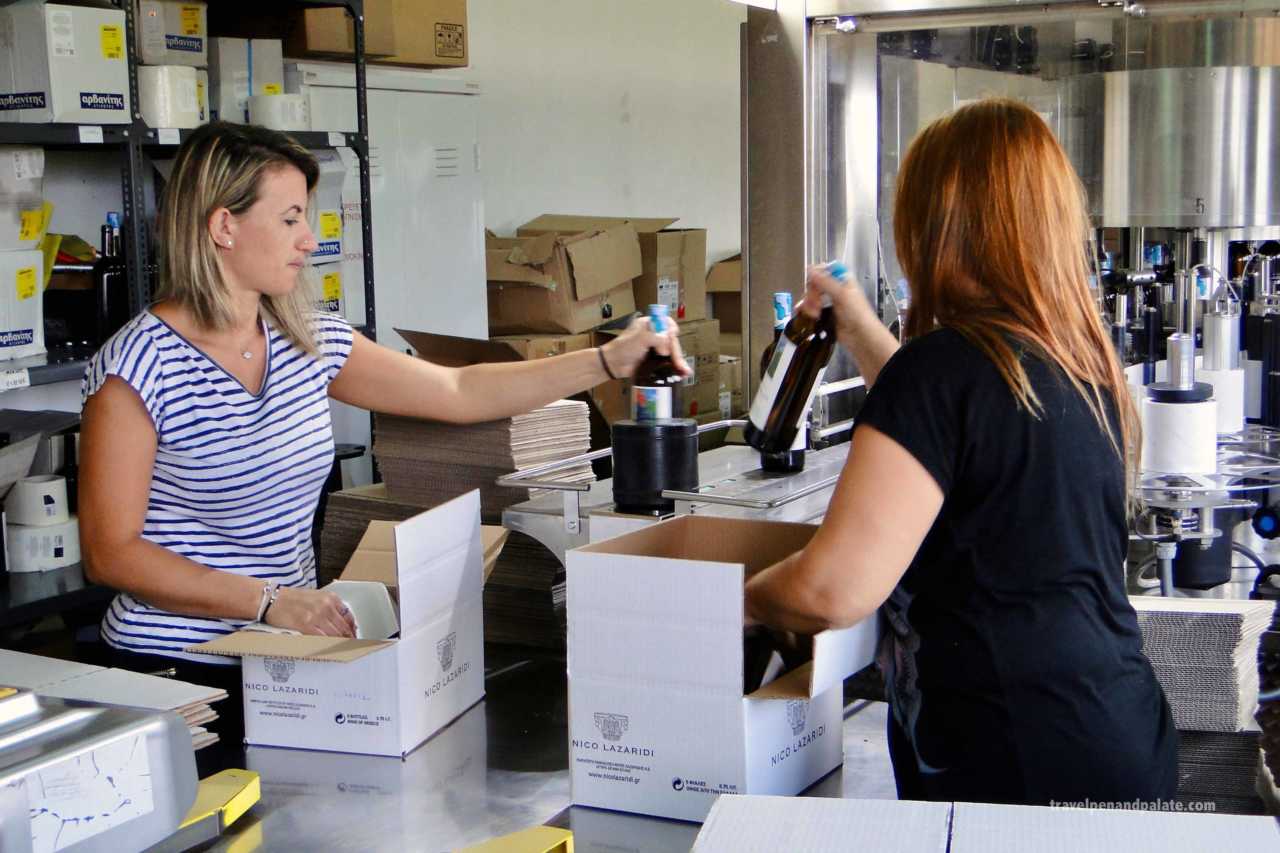
Frederico takes all of this personal. His father’s family has its roots in the historic city of Drama. His mother was from Florence, Italy, and his father Greek. The family’s profession was also ancient – stone and marble purveyor. Their roots are, literally, in the building blocks of civilization.
Frederico’s father learned to make wine during his years in Italy. In 1974 his parents moved family and business back to Drama but continued perfecting their wine making techniques as a “garage art.” In the early 1980s Nico’s father explored commercial possibilities and in 1987 established Chateau Nico Lazaridi.
They were one of the only wineries at the time in the Drama region of Eastern Macedonia/Thrace. Today eleven wineries dot the Drama area while seven labels are in the nearby Kavala region. The area is within the Protected Geographical Indication (PGI) Agora.
Chateau Nico Lazaridi is between three mountains, which funnel steady winds ventilating the grape vines helping to prevent mold. The vineyards lay on an ancient riverbed, which provides soil rich in minerals. The region’s flat riverbed land was made arable only as a result of 1930s drainage and land reclamation projects. The famous Battle of Philippi (1st century BC) was fought nearby when it was wetlands.
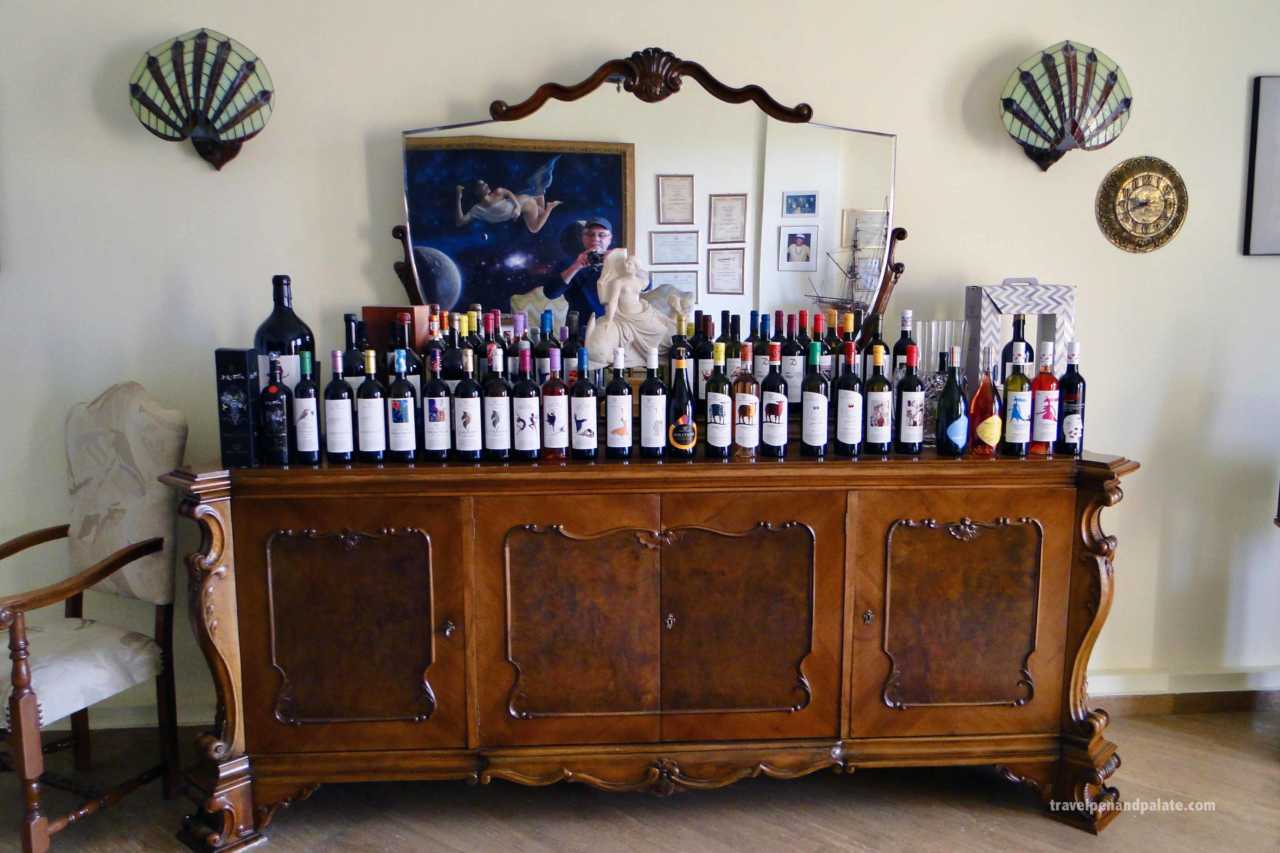
Chateau Nico Lazaridi proves that bigger can be better. Its 1.1 million bottle production consists of over a dozen wines and tsipuro, the classic distillation from wine must. Sixty-five hectares in the Drama area (PGI –Agora) contain the main vineyards. Fifteen hectares are contracted from area growers. The Mackedon Winery in Kavala is ten hectares and a new small four hectare winery will soon open on Mykonos Island.
Neither biodynamic nor organic farming methods are used in the vineyards because Frederico feels they’re best in an enclosed growing environment such as the islands where it’s easiest to maintain proper conditions.

The new wine cellar, for me, is the centerpiece. It has exposed earthen walls that maintain climate and temperature with 85% humidity. French and American oak barrels fill the vast room, but acacia wood is now being used especially for the whites. Acacia imparts a floral note. An impressive curved ceiling mural graces the length of the cellar.
Chateau Nico Lazaridi is a multidimensional company of several divisions today. A demo kitchen, which will feature area guest chefs, will offer cooking and wine classes. It will be the forerunner of a future restaurant on site.
A lab is on site to maintain quality control. They research developments in vinification in the quest for the next generation of Greek wine.
The Magic Mountain Art Gallery is the family’s great pride. It is both the private collection of the Lazaridi family and, in many cases, the designs for wine labels. Twenty-five years ago Nico established an artist partnership to contemporize Greek wine marketing. The Magic Mountain Art Gallery works with and patronizes contemporary Greek and European artists who express interpretations of the primal link between this drink of the gods and its role in Greek life.
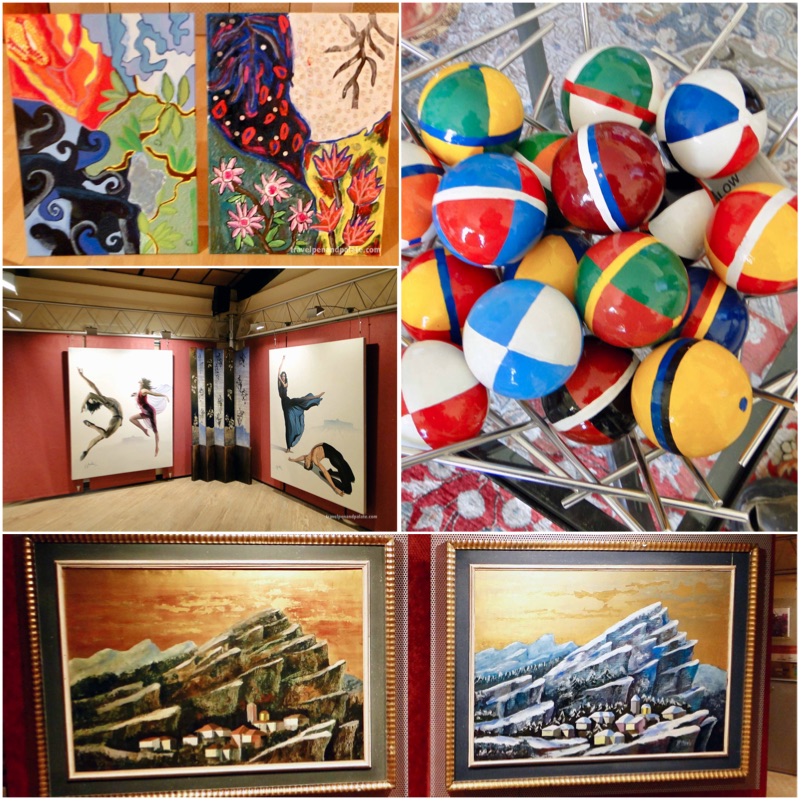
Lunch with Frederico offered hearty northern Greek dishes and two of Chateau Lazaridi’s most popular wines both from the PGI-Agora. Cavalieri Lazaridi White (Assyrtiko 70%, Sauvignon Blanc 15%, Ugni Blanc 15%) has dry yellow fruit notes with hints of honey emblematic of assyrtiko. It spends six months in acacia barrels adding floral accents.
Greek fashion designer Andria Thomais designed both labels for F- εὖ, a dry red of the PGI-Agora (Merlot 85%, Grenache Rouge 15%). The original paintings in the Magic Mountain collection are of two contented men and women. Dionysus would probably want his portrait on a label.

The Goumenissa P.D.O.
The Goumenissa P.D.O. (Protected Designation of Origin Goumenissa) lies within lush rolling countryside on the southeastern foothills of Mount Paiko in the southwestern part of the Kilkis territory. Recognized in 1979, the compact zone is the smallest of the four Greek P.D.O.
Although the region grew and marketed wines since ancient times, the Great Wine Blight of the 19th century devastated the industry throughout Europe. By the 20th century new grape varieties from America resistant to the blight revived the Greek vineyards. Most of these vines were hybrids created from both American and Greek cuttings.
Xinomaveo and negoska are prized indigenous red grapes of the Goumenissa region. Xinomavro grapes have high acidity, strong tannins and complex aromatic character. Negoska contributes dark, purple color with medium acidity and tannins and is often a 20% blend with other grapes.
Aidarini Winery – established in 1864
The Aidarini family have been a fixture in the Goumenissa region since the mid 19th century. The family-run business, led by Christos Aidarinis, maintains its own vineyards and buys grapes from other wine-growers in the P.D.O. zone. A new state-of-the-art winery facility welcomes guests for guided tours and tastings as well as for purchases. Besides available in Greece, Aidarini wines are also exported to Germany, France and Cyprus.

The Sauvignon Blanc – most exported to Germany – had aromas of walking through fresh fields of summer wild flowers. On the palate it was semi-dry with notes of lemon zest, fresh green grapes, white raisins. The finish is pleasant and dry in the throat. At Aidarini they served it to me with an interesting pairing of green olives sprinkled with orange zest.
Notes, an Aidarini blend of assyrtiko, malagouzia and chardonnay, was very light in aroma, like a soft breeze of fresh spring air after a light rainfall with tones of grapefruit zest. In the mouth it was initially tart with subtle secondary tar notes. Swirled in the mouth hints of citrus zest, and green apples were evident; it was a complex wine. Finish is dry and slightly acidic – gives a slight punch. Food pairing: smoked salmon with cream cheese.
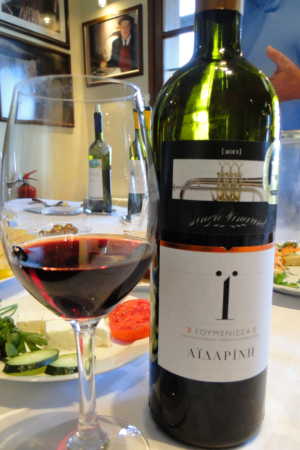
Roymenissa (Goumenissa Red Wine of Origin Name 70% Xinomavro and 30% Negoska). Earthy aromas of walking into a humid cave with hints of ripe grapes. In the mouth it was silky smooth with rich notes of ripe berries and currents that cut through the sweetness with secondary flavors of plumbs and dried figs. The finish was smooth, dry and flavorful but not tart. The one-year maturation in oak barrels adds an exquisite bouquet of berries, wood and smoke, and it may be aged three to five years. Food pairing: prosciutto with cheese and apricots, grilled meat and mature cheeses.
Domaine Tatsis Winery – established 1996
The grandfather of Periklis and Stelios started making wines decades ago before he turned it into a business. In Greece the level of wine appreciation is high due to the reality that so many families make wine at home.
Tatsis specializes in organic wines and since 2002 biodynamic techniques have dominated the growing process. The German association Demeter International is the only agency that certifies biodynamic wineries – it’s an expensive certifying process.
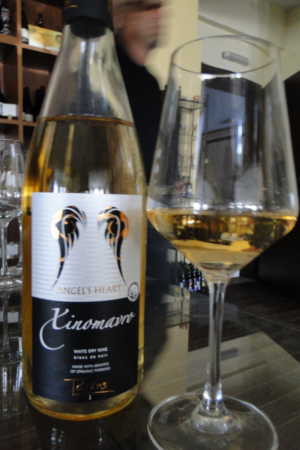
Domaine Tatsis never uses yeast, enzymes or preservatives. The hand labor involved with biodynamic farming is intensive. Leaves need to be hand trimmed to increase ventilation and prevent deadly molds and fungus. They do spray with copper sulfites, and they ionize the water to multiply the copper’s effect. The winery has 32 acres of vineyards made up of Roditis Alepou, Malagousia and Chardonnay for the whites and Negoska, Xinomavro, Cabernet Sauvignon, Merlot and Cinsaut for the reds.
Angel’s Heart Xinomavro White 2014 has aromas of honey. In the mouth those honey notes continue with ripe peach, apricots and figs – dry with a slightly astringent finish. In a 2015 vintage the honey disappeared in the mouth and was replaced with fresh mineral water and subtle notes of herbal flowers. The finish was dry with a bit more acidity. Domaine Tatsis likes to age their whites believing they not only improve but that too many whites are sold young and raw – I agree!
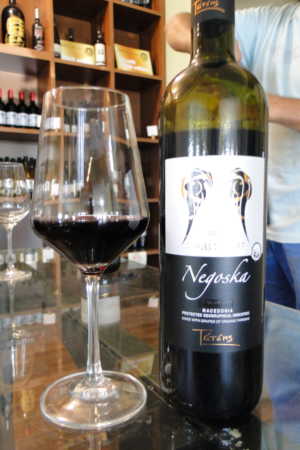
Tatsis 100% Negoska is from a red grape cultivated exclusively in Goumenissa and part of the unique qualities of the P.D.O.
Domaine Tatsis is the only winery to bottle 100% negoska and as a red wine. The nose was full of ripe blueberries and red currents. The same notes continued in the mouth but intensified as very ripe, full flavored fruits that lingered on the tongue. The finish was dry and tingled in the throat.
Tatsis 100% Roditis 2014 has a reddish amber tint to the wine, but the nose detected a hint of mandarin orange zest and honeysuckle. My mouth enjoyed dry, aromatic but light floral and herbal tastes of young spring plants. The finish was dry and unexpectedly tingly in the throat.
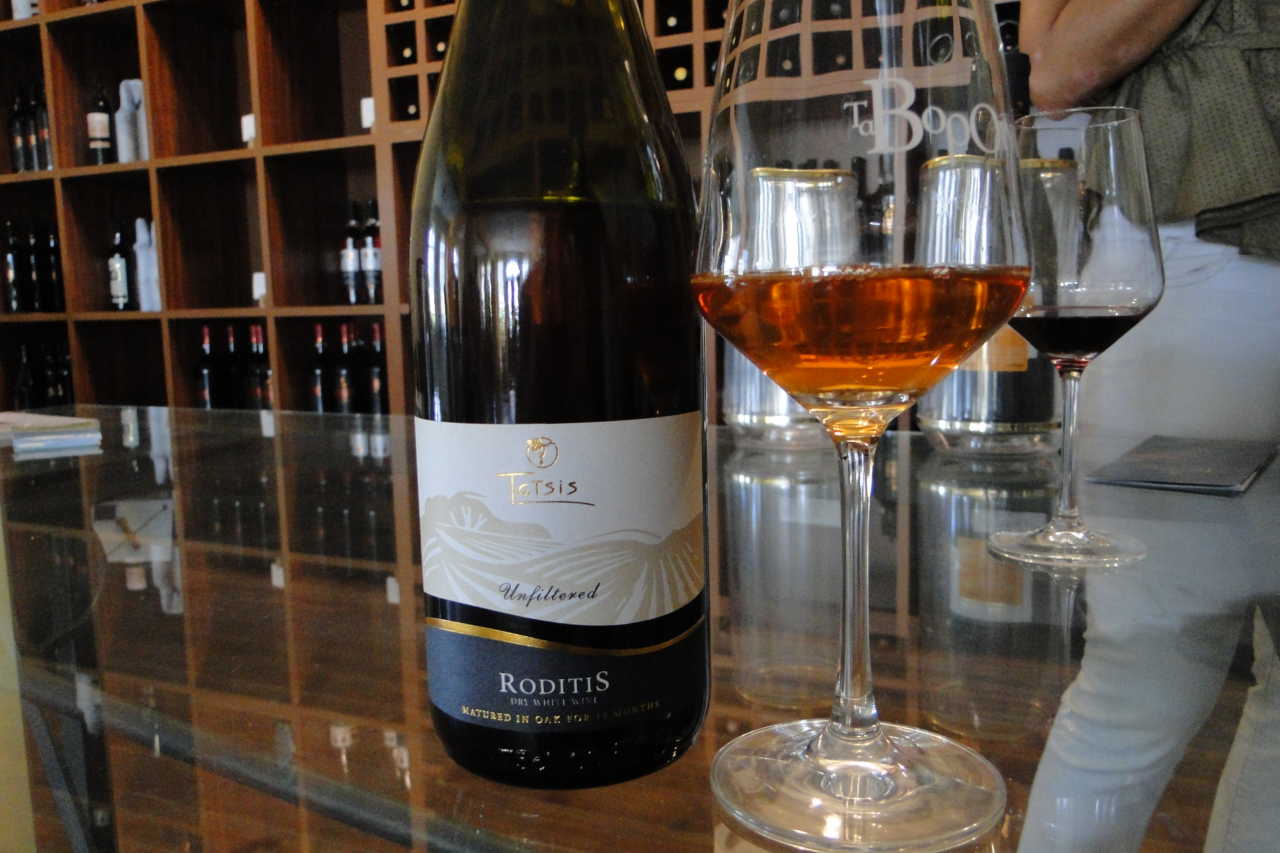
Tatsis Wines are distributed in the USA by DNS Distributers, New York and San Francisco.
Chatzivaritis Estate
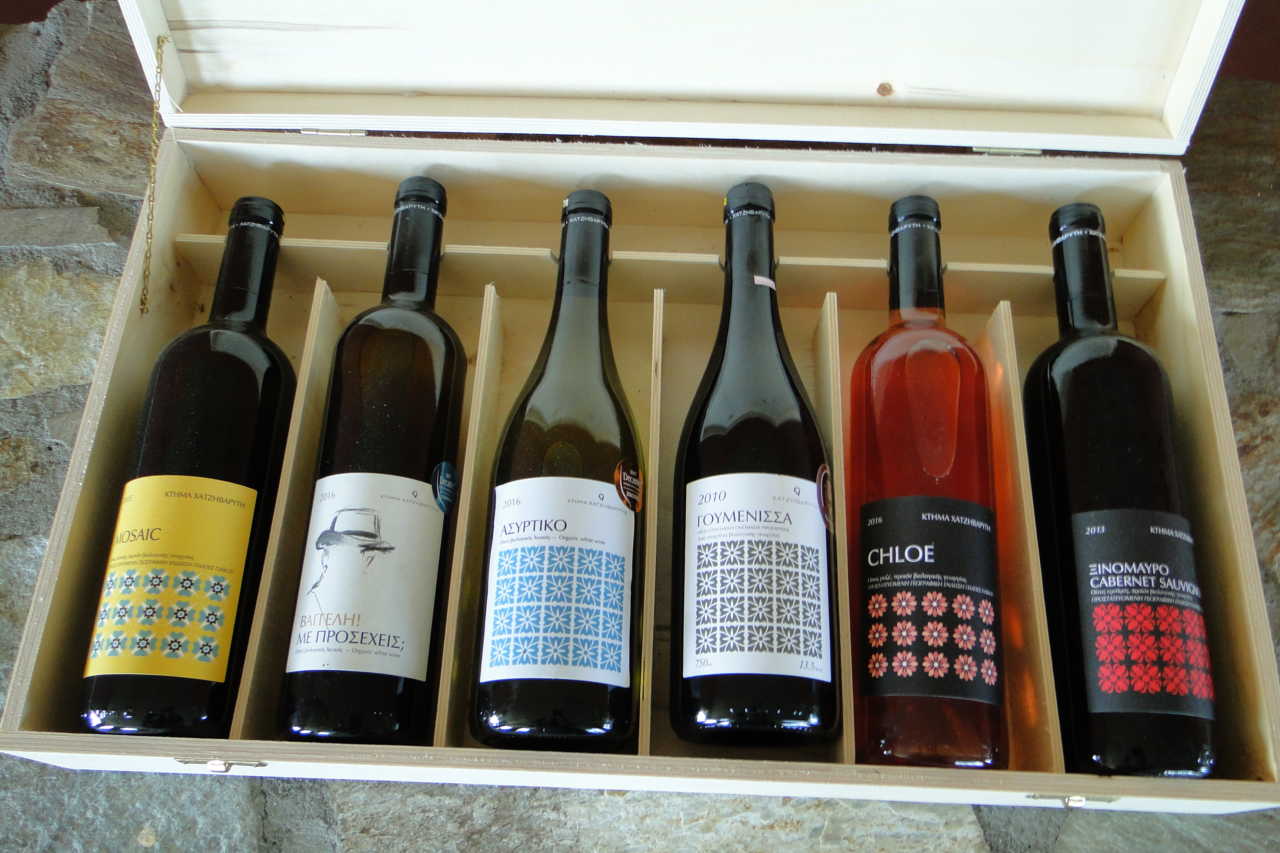
A fairly new winery (first planting 1993 on 13 hectares – 2007 their first vintage) Chatzivaritis Estate produce three red, three whites and one rose. Wines are aged at least 4 years and only in expensive –$925 each – French Oak barrels.
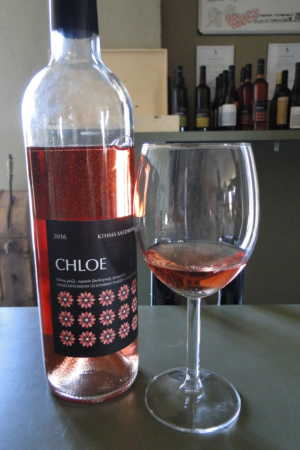
For Chloe Rose, a blend of 50/50 cabernet sauvignon and xinomavro, the crushed grape juice is in contact with the skins for eight hours before fermentation begins. It had a nose with floral hints, white currents, and slightly unripe raspberries. In the mouth the tongue was coated with notes of strawberries and raspberries. The wine started semi dry but quickly changed to dry and finished in the throat light and dry.
100% Assyrtiko had the fresh, light yet complex flavor of this outstanding Greek white grape. Very little aroma for the nose to detect except fresh summer air. Identical taste notes continued – light floral summer flowers with sweetness cut by a hint of grapefruit zest. The finish was dry and smooth continuing with notes of grapefruit.
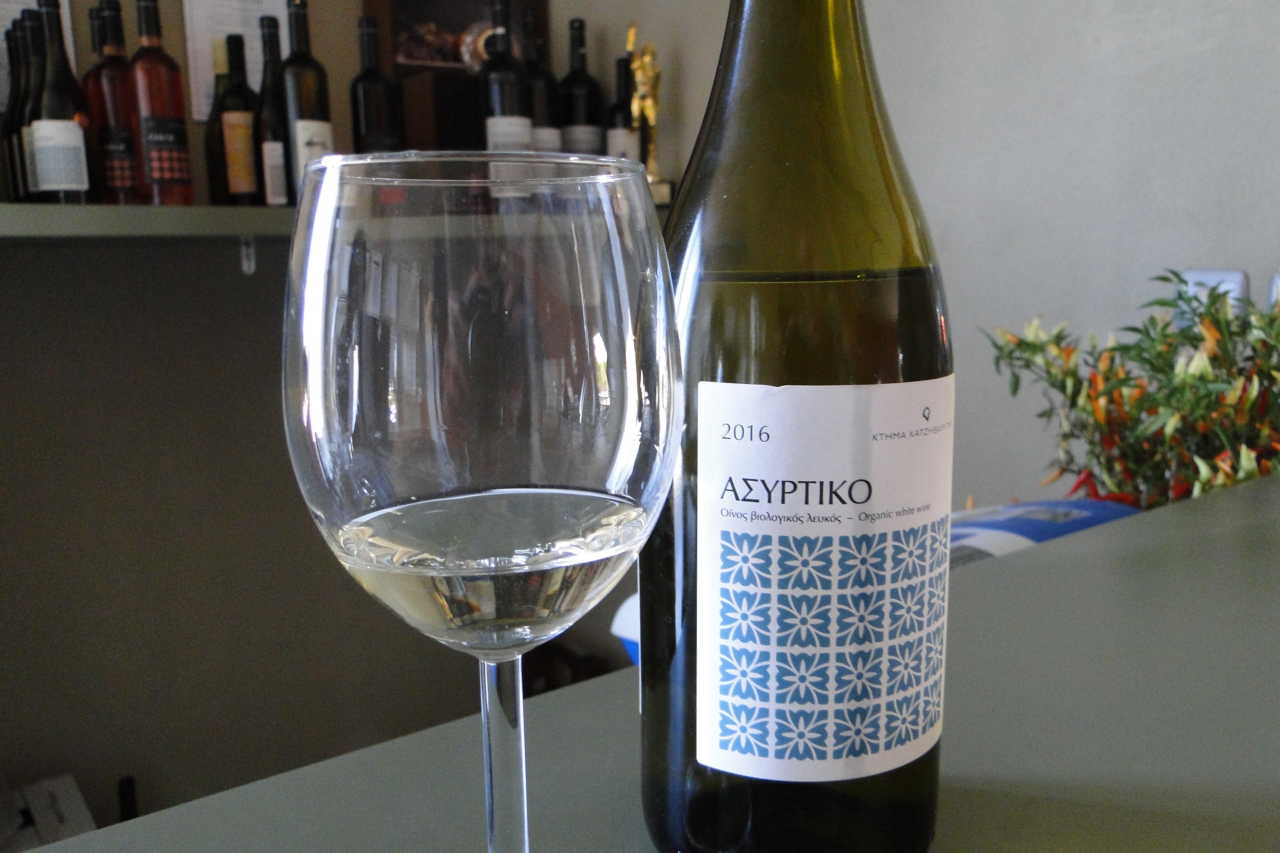
Another 100% Assyrtiko, an experiment with natural yeast, was aged for six months in oak that has been used for sauvignon blanc. The nose detected hints of caramel and wet cedar, while in the month there was a slight sweetness uncharacteristic of an assyrtiko. The aging in old barrels provided these flavors. Secondary floral and herbal notes included anise and chamomile. In all a surprising and promising fermentation variation for this classic Greek wine.

Chatzivaritis Estate Eurynome Red 2013 was both deep red in color with aromas of ripe plumbs and fresh red meat. This intense combination continued in the mouth with notes of tobacco, grilled eggplant skin and thyme before ending in the throat in a dry finish. It would be the perfect wine to pair with a grilled prime steak.
Chatzivaritis Estate wines are distributed in the USA by Ekletikon.
When you go: (1) The Goumenissa P.D.O. region is easily reached by car from nearby historic Kilkis, which is 35 miles north of Thessaloniki. (2) Chateau Nico Lazaridi is located near Drama about 100 miles east of Thessaloniki.
Thank you: Marianna Skoularika, Michelle Karamisakis and Fotis Altiparmakidis of Kilkis Region Tourism for being my guides in the The Goumenissa P.D.O. and to Frederico Lazaridi for my personal tour of his winery.
Arrangements were facilitated by Pass Partout Tourism Marketing, DMC, Thessaloniki
Travel with Pen and Palate every month to Greece and the world in the Hellenic News of America.




